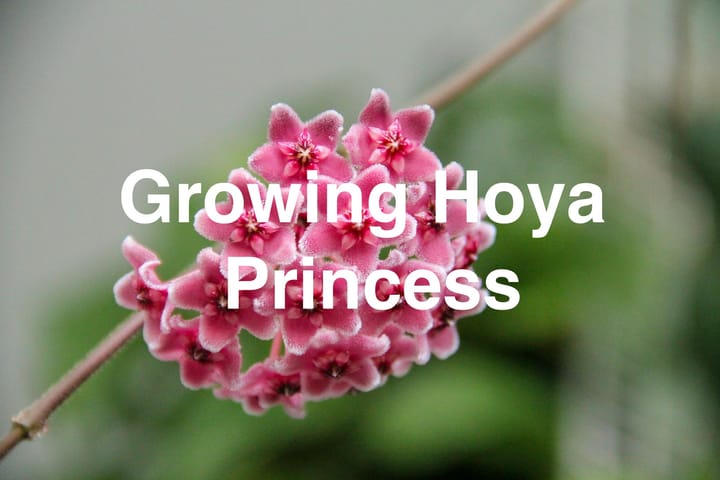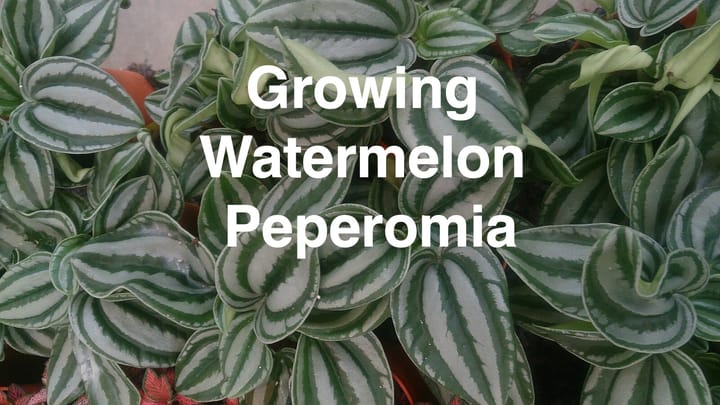How to Grow Staghorn Fern
Staghorn ferns, also known as Platycerium, have a unique look that can bring a touch of the exotic to any indoor or outdoor space.

Growing a Staghorn fern isn't too hard, but it does need some special care to thrive. This fern doesn't grow in soil like most plants.
Instead, it's what we call an epiphyte, which means it grows on other plants or objects, taking what it needs from the air and rain around it.
When starting out, you'll first secure your fern to a board or hang it in a basket. This mimics how they grow in nature, usually on tree trunks.
The right environment for these ferns should be similar to their natural rainforest habitat. This means they like a place that’s warm, has indirect sunlight, and is pretty humid.
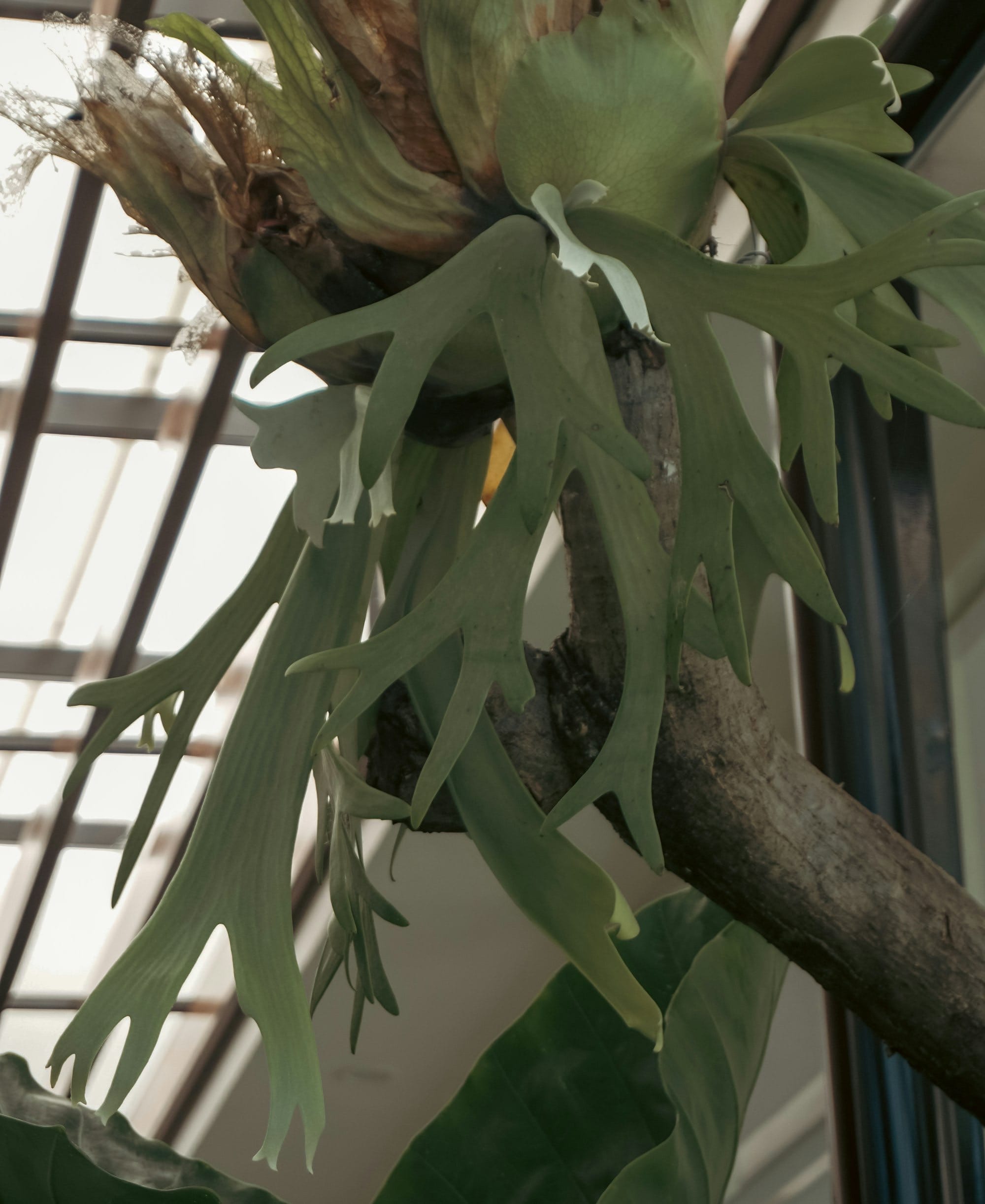
Taking care of your Staghorn fern means making sure it gets enough water and the right kind of nutrients.
Just like any other plant, it can run into problems, but knowing what to do can help you fix issues like brown fronds or pests.
Key Takeaways
- Staghorn ferns require mounting or hanging for natural growth.
- They thrive in warm, humid, and indirectly lit environments.
- Regular care includes proper watering and fertilizing.
Understanding Staghorn Ferns
Staghorn ferns, part of the Polypodiaceae family, have a diverse range of species and adapt to their natural habitats in unique ways.
These epiphytic plants are quite distinct from your typical garden ferns.
Species Overview
Platycerium, commonly known as Staghorn or Elkhorn ferns, are unique plants with a variety of species to choose from. Key characteristics to recognize in these species include:
- Fertile Fronds: These are the conspicuous parts that often resemble antlers, giving the plant its common name.
- Basal Fronds: These shield-like leaves overlap at the base and help attach the fern to its support structure.
Popular species include:
- Platycerium bifurcatum: Most common, with broad, arching fertile fronds.
- Platycerium veitchii: Known as the silver staghorn, more sun-tolerant, with blue-green fronds.
- Platycerium hillii: Features very broad, bright green fronds.
- Platycerium andinum: Also called American or Blake staghorn fern.
This section is about the various types of Staghorn ferns you might encounter and what makes them special.
Natural Habitat

Staghorn ferns thrive in warm, humid conditions. They are epiphytic, meaning they grow on other plants, such as tree trunks and branches, without harming them.
The natural habitat of these plants includes:
- Rainforests of Southeast Asia, Australia, and other subtropical regions.
These plants gain nutrients and moisture from the air and debris around them, rather than from soil. They are well-adapted to their surroundings, using their roots to anchor to tree barks and rocks.
With this knowledge, you can better understand the unique requirements of Staghorn ferns and create the right environment for them to prosper.
Initial Setup and Mounting
Successfully growing Staghorn Ferns requires a solid start with the right mount and preparation. The magnitude of these early steps can set the stage for a thriving display.
Choosing the Right Mount
When selecting a mount for your Staghorn Fern, consider materials like a wooden board or a piece of tree bark that can support the fern as it grows.
Your chosen mount should be sturdy and not prone to rotting, as it will be exposed to moisture.
Cedar and plywood are good choices due to their resistance to decay. Ensure that the size of the board is large enough to accommodate the fern's growth over time.
- Suitable Materials: Wooden board, tree bark
- Size: Large enough for growth
- Durability: Resistant to moisture and rot
The goal is to mimic the fern's natural growing conditions, where they attach themselves to trees, rather than growing in the ground.

Preparing for Mounting
Begin by gathering your materials: Sphagnum moss, wire or fishing line, and your chosen mount.
First, soak the Sphagnum moss in water until it is thoroughly moist; this will be the base for your Staghorn Fern to latch onto.
Next, you'll need to secure the moss to the mount:
- Lay a layer of Sphagnum moss on the board.
- Place the fern with its root ball centered on top of the moss.
- Use wire or fishing line to firmly secure the fern and the moss to the board.
Make sure the fern is mounted firmly enough to prevent it from moving, but not so tight that it damages the plant.
Suitable Environment
Creating the right environment is key for your staghorn fern to prosper. The temperature, lighting, and humidity must mimic their natural tropical habitat.
Temperature Conditions
Your staghorn fern thrives in temperatures between 50-100 degrees Fahrenheit. They are accustomed to warm conditions, so ensure your space doesn't fall below this range, especially during colder months.
It's important to protect these ferns from extreme cold, which can damage them.
- Ideal Temperature Range: 50-100°F
- Precaution: Keep away from cold drafts and windows in winter.
Sunlight and Shade Requirements

Staghorn ferns require bright, indirect light to grow well. Direct sunlight can harm these plants, so it's best to place them in a spot where they'll receive filtered light. A north-facing window or a shaded area with ambient light works well.
- Placement: North-facing windows, shaded areas
- Avoid: Direct sunlight, especially during peak hours
Humidity Levels
High humidity levels are essential for staghorn ferns, resembling their humid, tropical origins.
Aim to maintain a humidity level around your fern that mimics a humid, rainforest-like environment.
Misting the plant, using a humidifier, or placing it on a tray with pebbles and water can help increase the moisture in the air.
- Methods to Increase Humidity:
- Misting regularly
- Humidifiers
- Pebble trays with water
Care and Maintenance
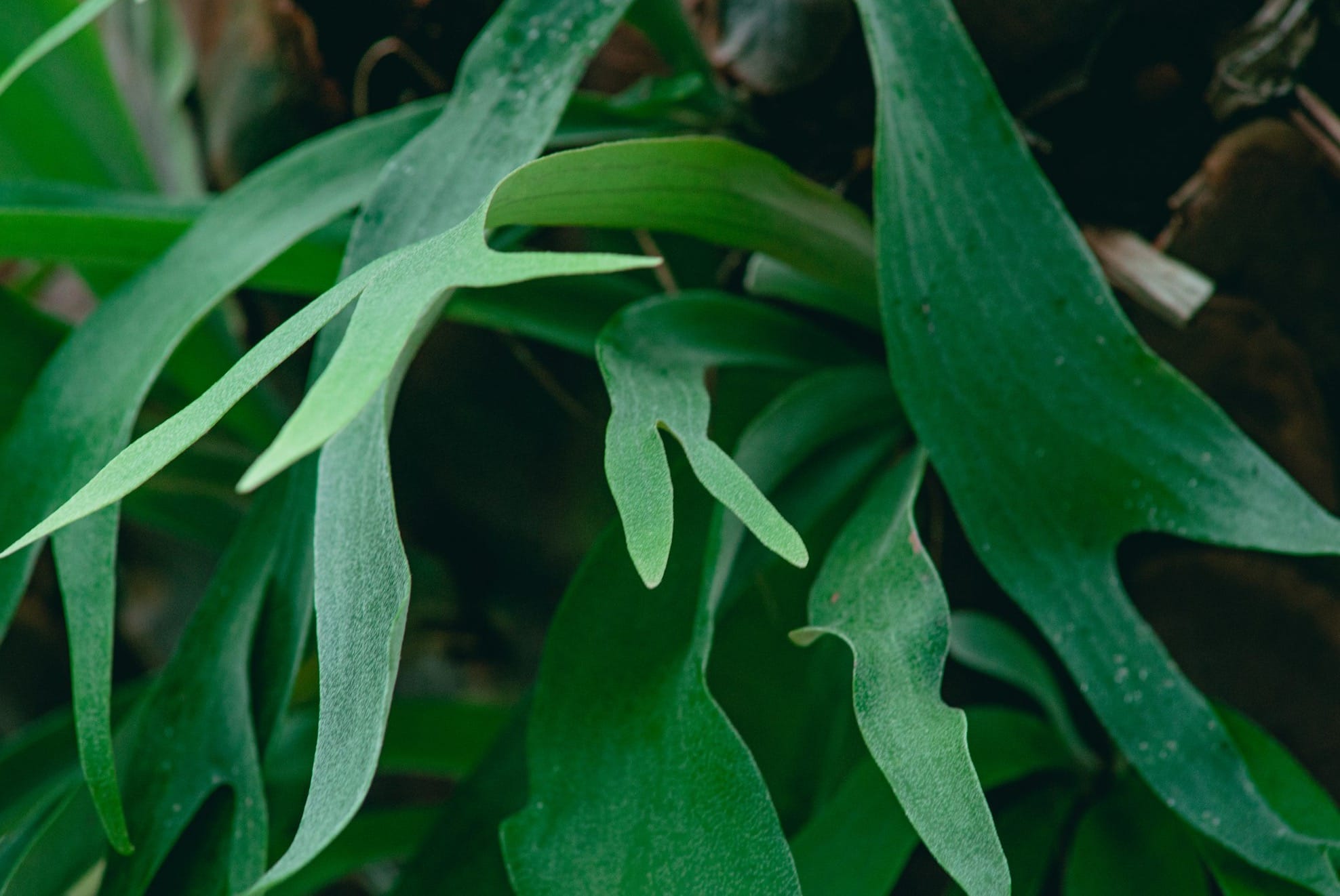
Watering your staghorn fern is crucial to its health. The best method is soaking the entire root ball in water for about 5 minutes or until fully saturated. Be sure to let it drip dry before re-hanging.
Regular watering ensures the plant remains healthy, but allow the growing medium to dry out in between waterings.
Using rainwater can be beneficial as it is free from the chemicals found in tap water.
When it comes to humidity, your staghorn fern thrives in moist conditions.
If your indoor air is dry, consider using a humidifier or misting the plant frequently to maintain the moisture it loves.
Incorporating organic matter into the potting mix can help retain moisture and provide nutrients.
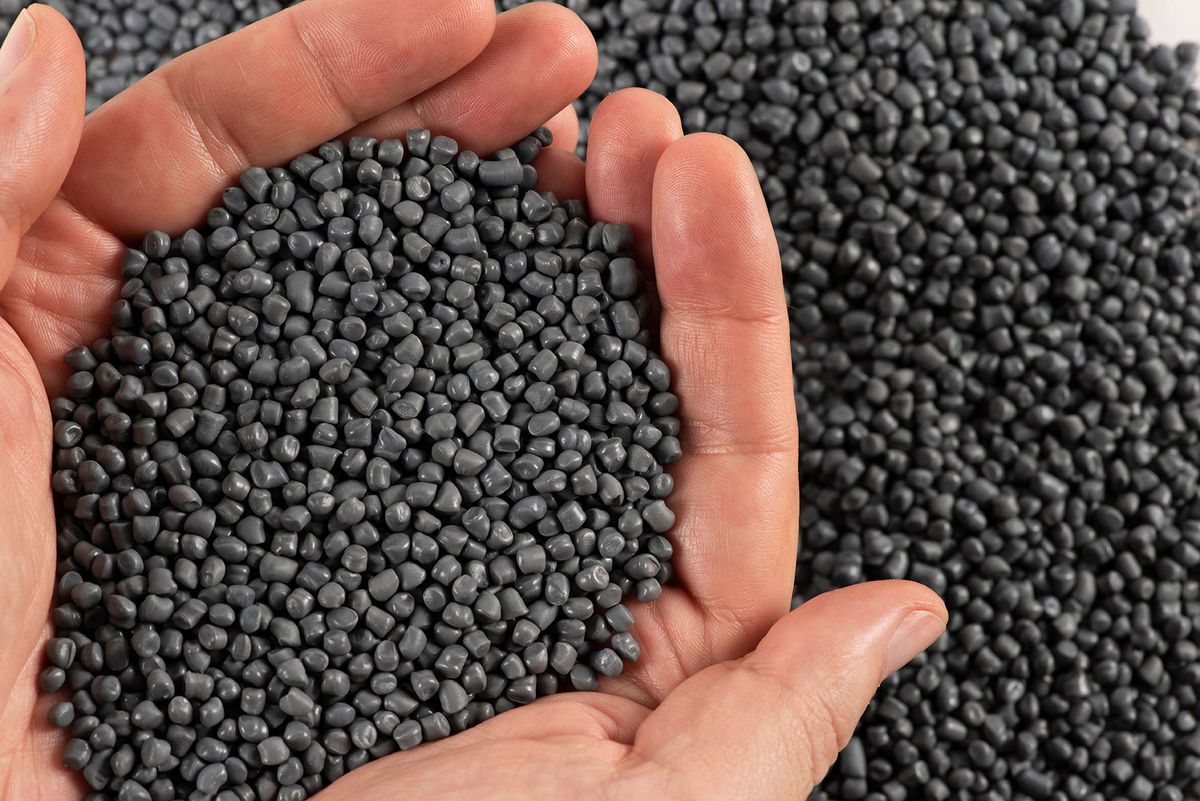
Fertilizing should be done with caution; these ferns need a balanced fertilizer, preferably with a 1:1:1 ratio, diluted and applied once a month during the growing season.
Always water the plant before you apply fertilizer to prevent root burn.
Additionally, pruning is important to remove any dead or brown fronds, which can promote new growth and prevent disease.
However, the shield fronds, even if brown, should not be cut away as they protect the roots and absorb nutrients.
Propagation
Staghorn ferns can be increased in number using two main methods: growing them from spores or separating the pups. Each approach has specific steps to ensure success.
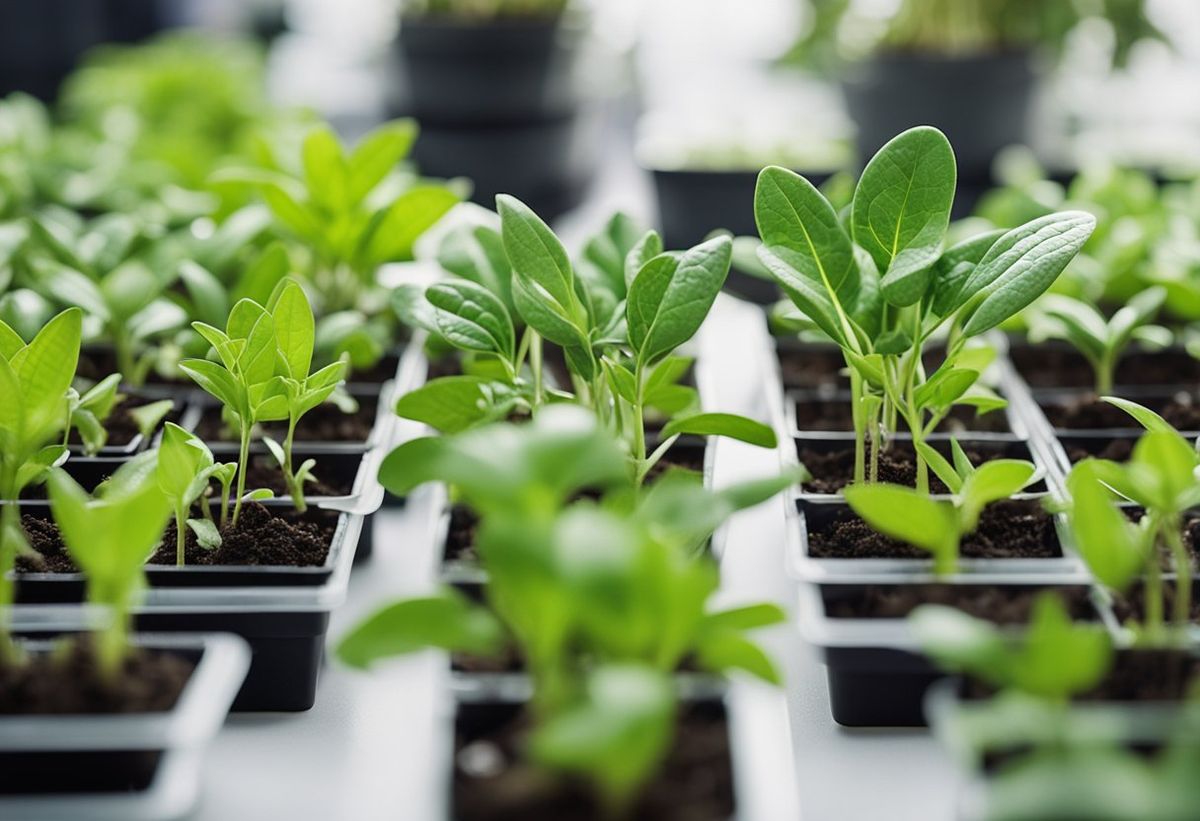
Spore Propagation
To propagate staghorn ferns from spores, follow these steps:
- Collect Spores:
- Wait for the spore patches, usually found on the underside of fertile fronds, to turn a brown color.
- Gently scrape the spores off onto a piece of paper.
- Sow Spores:
- Spread the spores on top of a moist peat and perlite mix in a container.
- Cover the container with clear plastic to maintain humidity.
- Germination:
- Place the container in indirect light and keep the medium slightly moist.
- Germination may take several weeks to months.
- Transplanting:
- Once the sporelings have developed several leaves, carefully transplant them into individual pots.
Pup Division
To separate pups from a parent staghorn fern, these are the steps:
- Identify Pups:
- Examine the base of the parent plant for small pups, which are mini ferns developing at the plant's base.
- Separation:
- Using a sharp knife, delicately separate the pup from the parent plant, ensuring you include roots and a piece of the rhizome.
- Planting:
- Mount the separated pup on a piece of wood, or plant it in a pot with appropriate fern media.
- Secure the pup using non-copper wire or fishing line until it establishes its own hold.
Troubleshooting Common Issues
When growing Staghorn Fern, you might face some challenges with pests or diseases. Understanding how to manage these problems is crucial to maintaining a healthy plant.

Pest Management
Staghorn ferns can become a target for pests like the scale insect. These pests look like small brown bumps clinging to the fronds of your fern and can cause damage if not controlled. To manage these pests, you can:
- Inspect your plant regularly for signs of infestation.
- Manually remove pests using a soft cloth or a gentle stream of water.
For persistent pest problems, consider using insecticidal soap or neem oil. Apply carefully according to the product instructions, making sure to reach the undersides of the fronds.
Disease Prevention
Disease in Staghorn Ferns often comes from environmental stressors such as overwatering, which can lead to issues like root rot or fungal diseases, including black spot. To prevent diseases:
- Keep the potting mix lightly moist but not soggy.
- Ensure good air circulation around your plant.
- Avoid wetting the center of the plant when watering, focusing on the soil instead.
If you notice black or dark spots on the fronds, it's possible your Staghorn Fern has developed black spot disease. To address this, consider the following steps:
- Remove any affected fronds to prevent spread.
- Adjust your watering habits to ensure the plant has time to dry out between waterings.
- Use a fungicide if necessary, following the label's application guidelines.
Special Considerations for Indoor Care
Growing Staghorn Ferns indoors requires attention to their unique needs to replicate their natural rainforest habitat where they thrive high on trees.
You'll need to select an ideal location and provide care that caters to their specific requirements.
Selecting the Right Spot
Your Staghorn Fern is not just another houseplant; it demands the right environment to flourish.
A prime spot would be a south-facing window, where it can receive plenty of bright, indirect sunlight.
Direct sunlight can harm the delicate fronds, so ensure it’s filtered or diffused. If a south-facing window isn't available, careful use of grow lights can compensate for lack of natural light.
Consider the humidity level in your chosen spot as well. Staghorn Ferns love moisture in the air, which makes rooms like your bathroom an excellent choice, especially if it gets sufficient light.
The steam and higher humidity often found in bathrooms can help mimic the natural conditions the ferns are accustomed to.
Additional Indoor Tips
When it comes to watering your fern, the method is as important as the frequency. Here are some specific steps to make sure you get it right:
- Water every 7-10 days, reducing frequency during the winter months.
- Use only filtered water or rainwater, as tap water can contain minerals that may build up and harm the plant.
- To water, fully saturate the plant by soaking it in room temperature water for about 15 to 20 minutes. If mounted, remove from the wall for soaking, or thoroughly run water over the wood it's attached to and allow it to drain.
Don’t forget to make provisions for drainage, as standing water can cause root rot. After watering, ensure that the fern is able to drain completely before rehanging or placing back in its spot.
Indoor plants often accumulate dust on their leaves which can hinder growth. For your Staghorn Fern, clean the fronds gently with a soft cloth to keep them healthy and thriving, ensuring you handle the delicate fronds carefully to avoid damage.
Creating the Perfect Staghorn Fern Display
Staghorn ferns are unique and attractive plants that require a special approach to display them effectively.
As an epiphyte, the natural habitat of the staghorn is on trees rather than in soil. This means mounting your fern on a surface that mimics their natural growing conditions is essential.
To start, you'll need a suitable base, such as a piece of wood or a wooden plaque. Mounted on Wood, your staghorn will have the stability it needs and the aesthetic appeal of a natural setting. To mount:
- Soak some sphagnum moss in water while preparing the wood.
- Create a small bed of the wet moss on the plaque.
- Place the fern's roots on the moss.
- Secure the plant and moss with fishing line or nylon thread, wrapping it in a crisscross pattern.
When considering the display, ensure that your staghorn is positioned somewhere with bright, indirect light.
Your fern should also be in a place where it can be easily watered and misted, as humidity is crucial for its health.
For gardeners who might want a unique look, attaching the staghorn to an Elk antler is an innovative display choice that harks back to the plant's nickname, the elk horn fern.
Whatever medium you choose for display, remember that your staghorn fern thrives on attention and care.
Regularly check that it's firmly attached and not overly dry to enjoy the spectacular display of your thriving staghorn fern.
Ensuring Long-Term Health
To maintain the health of your Staghorn Fern, focus on its fronds, the leaf-like parts that are crucial to its survival.
Basal fronds are the round, flat leaves at the base that serve as anchors and collect nutrients. Ensure they remain healthy, as they're fundamental to the plant’s overall well-being.
Your Staghorn Fern also has foliar fronds, which grow upward and outward, resembling antlers. These antler fronds are what give the fern its distinctive appearance.
As these are the primary photosynthesizing part of the plant, watch for discoloration or damage which may indicate health issues.
For fertile fronds, which are responsible for reproduction, check for spore patches on the underside as these signify maturity and health.
A lack of these could indicate poor health or a need for more optimal conditions.
Here’s what you need to do:
- Watering: Ensure the root ball is moist but never soggy. If indoor, a weekly soaking works. Outdoor ferns may need more frequent watering.
- Light: Keep it in bright, indirect light, as prolonged direct sun can harm the fronds.
- Monitor temperature, as extreme cold or heat can damage your fern. Aim to keep the environment between 50 and 100 degrees Fahrenheit.
- Humidity is crucial for mimicking their natural environment. Indoor plants benefit from regular misting, a humidifier, or a water tray with pebbles.
Regularly inspect and keep your fern clean to prevent disease. By following these guidelines, you’ll foster an environment for your Staghorn Fern where it can thrive for years to come.
Frequently Asked Questions
Gaining a deeper understanding of the specific care requirements for staghorn ferns can help you nurture a healthy and vibrant plant. Explore common queries and clear explanations to optimize your staghorn fern's growth and health.
What are the best practices for potting and growing staghorn ferns?
For potting, select an 8-inch or larger pot with drainage holes, ensuring that the roots have ample space to develop. Use a mix of soil suited for epiphytes, like orchid bark mix, as staghorn ferns thrive in well-draining mediums.
When growing, mount ferns on wooden boards or hang them, which mimics their natural tendency to grow on tree trunks. Provide bright, indirect light and shield them from the full sun to avoid scorch.
What is the proper way to water staghorn ferns for optimal growth?
Water your staghorn fern once a week during its growing season, ensuring you moisten the soil or mounting medium thoroughly. In winter, reduce watering to every two to three weeks.
If mounted, make sure the board dries between waterings to prevent rot. Always water in the morning to allow excess moisture to evaporate throughout the day.
Can staghorn ferns thrive indoors and if so, how can they be cared for?
Yes, staghorn ferns can grow indoors. They need bright, indirect light, like that found near a north or east-facing window.
Regularly mist your fern to maintain humidity, especially in dry indoor environments. Keep the room above 60°F (15°C) and avoid placing your fern in the path of cold drafts or direct heat sources.
What are the common issues faced by staghorn ferns and how to address them?
Common issues include yellowing fronds, indicating overwatering, and brown, crispy fronds from under-watering or too much light.
Prevent root rot by ensuring proper drainage and allowing the growing medium to dry slightly between waterings. Pests like scale and mealybugs might appear; combat them with horticultural oils or insecticidal soaps.
How can you propagate staghorn ferns from spores successfully?
To propagate from spores, press them into moist soil and lightly mist. Keep the soil consistently moist, and in 3 to 6 months, new ferns should appear.
After the development of two true leaves, you can transplant the new ferns. To propagate from a mature plant, look for pups with their own roots and fronds and carefully separate them, ensuring each division has a piece of the rhizome to grow independently.
What are the ideal conditions for staghorn ferns to flourish in Florida?
Staghorn ferns flourish in Florida's warm and humid climate. They perform best when placed in partial shade with protection from the intense midday sun.
These ferns appreciate the natural humidity, simulating their rainforest origins. However, during particularly dry or cold spells, they may require additional misting and protection from temperature extremes.

